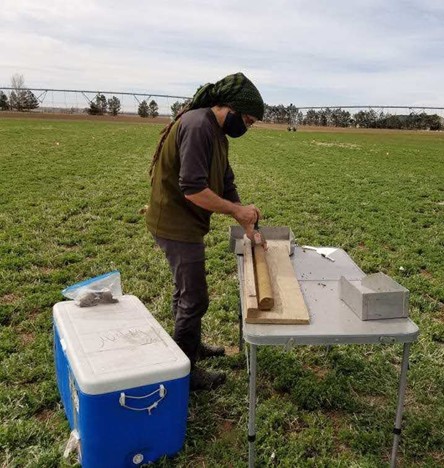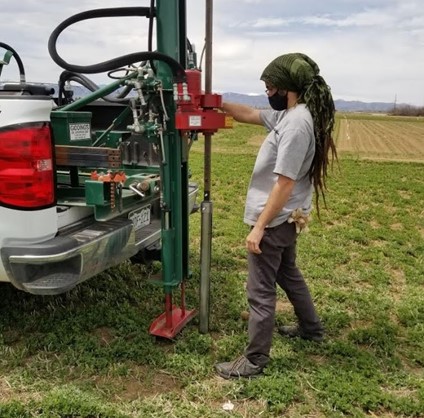Dirt is dead. Soil, on the other hand, is teaming with bacteria, fungi, algae and other tiny creatures that are the foundation of a symbiotic ecosystem. Like all living things, soil has health; defined as the continued capacity of soil to function as a diverse living ecosystem that sustains plants, animals and humans. This definition speaks to the importance of managing soils, so they are sustainable for future generations. Decades of conventional agriculture practices have damaged soil health resulting in the loss of soil biodiversity across the globe.
Healthy soils in agricultural landscapes sustain crop production by supporting nutrient recycling, water retention and increased organic matter content. Regenerative agriculture is a holistic land management approach based on six core principles that leverage our understanding of ecology to tighten the carbon cycle and support soil health.
“Tightening” the carbon cycle means a total overall reduction in carbon loss by increasing the amount of carbon coming in from photosynthesis and reducing the amount leaving as carbon dioxide. Regenerative agricultural practices accomplish this by increasing the amount of organic matter in soils.
 General Mills’ 6 Core Principles of Regenerative Agriculture
General Mills’ 6 Core Principles of Regenerative Agriculture
Instead of leaving bare fields to fallow over winter, a common practice in conventional agriculture, regenerative agriculture practitioners protect soil and increase soil organic matter (SOM) by reducing tillage, planting cover crops and leaving crop residues. Regenerative principles emphasize combining multiple practices like grazing cattle over cover crops to increase input diversity (both feces and plant residue) and maintain these inputs throughout the season. Individually, these practices have been shown to improve soil health by increasing soil biodiversity and building SOM. However, we currently have limited understanding of how multiple soil health practices synergize, or the effects of system-level management on soil health.
 FFAR Fellow, Aaron Prairie
FFAR Fellow, Aaron Prairie
To advance this understanding, I am collaborating with General Mills to compare soil health indicators between conventional and regenerative agricultural systems. Producers from 24 farms are enrolled in a regenerative agriculture initiative launched by General Mills in and around the Cheney Lake watershed in central Kansas. The program is designed to provide three years of one-on-one consulting to farmers to help them develop and implement regenerative management plans. Each farmer will reduce or eliminate tillage, extend the number of days with a living root, increase diversity over and above their standard practices and have the option to integrate livestock.
The most commonly used soil health indicator throughout the world is SOM, because of the numerous chemical, physical and biological processes it influences. However, SOM is incredibly complex, requiring separation into multiple components with their differing behaviors to study and predict the dynamics. The working hypothesis in my lab is that there are two distinct pathways of formation.
 FFAR Fellow, Aaron Prairie
FFAR Fellow, Aaron Prairie
We are analyzing soil samples for these different components of SOM as well as biodiversity, both vital indicators of soil health. Our research allows for a holistic understanding of the system-level effects of regenerative management on soil health and a direct comparison with conventional systems.
We will use the data we collect to advance the recently developed MEMS 2.0 ecosystem model to represent interactions between soil biological communities, SOM and regenerative management. The current model used indicators of SOM to predict carbon storage potential and ecosystem response to climate change; however, it does not account for the effects of land management. We will integrate this new understanding of regenerative management on measures of SOM and biodiversity to increase the model’s ability to predict the effects of management and policy actions on the sustainability of soils, as well as to develop strategies for carbon sequestration.
With the collaboration facilitated by the FFAR Fellows program and support from General Mills and Colorado State University, this project advances our understanding of the mechanisms promoting soil health and the management practices that facilitate them. In addition to supporting this crucial research, the FFAR Fellows program has been instrumental in my professional development and has laid the foundation for me to succeed.
 The difference between conventional and regenerative management systems.
The difference between conventional and regenerative management systems.
 Diagram depicting the two pathways of soil organic matter formation
Diagram depicting the two pathways of soil organic matter formation
More about Aaron Prairie
2020 – 2023 FFAR Fellow
Learn more